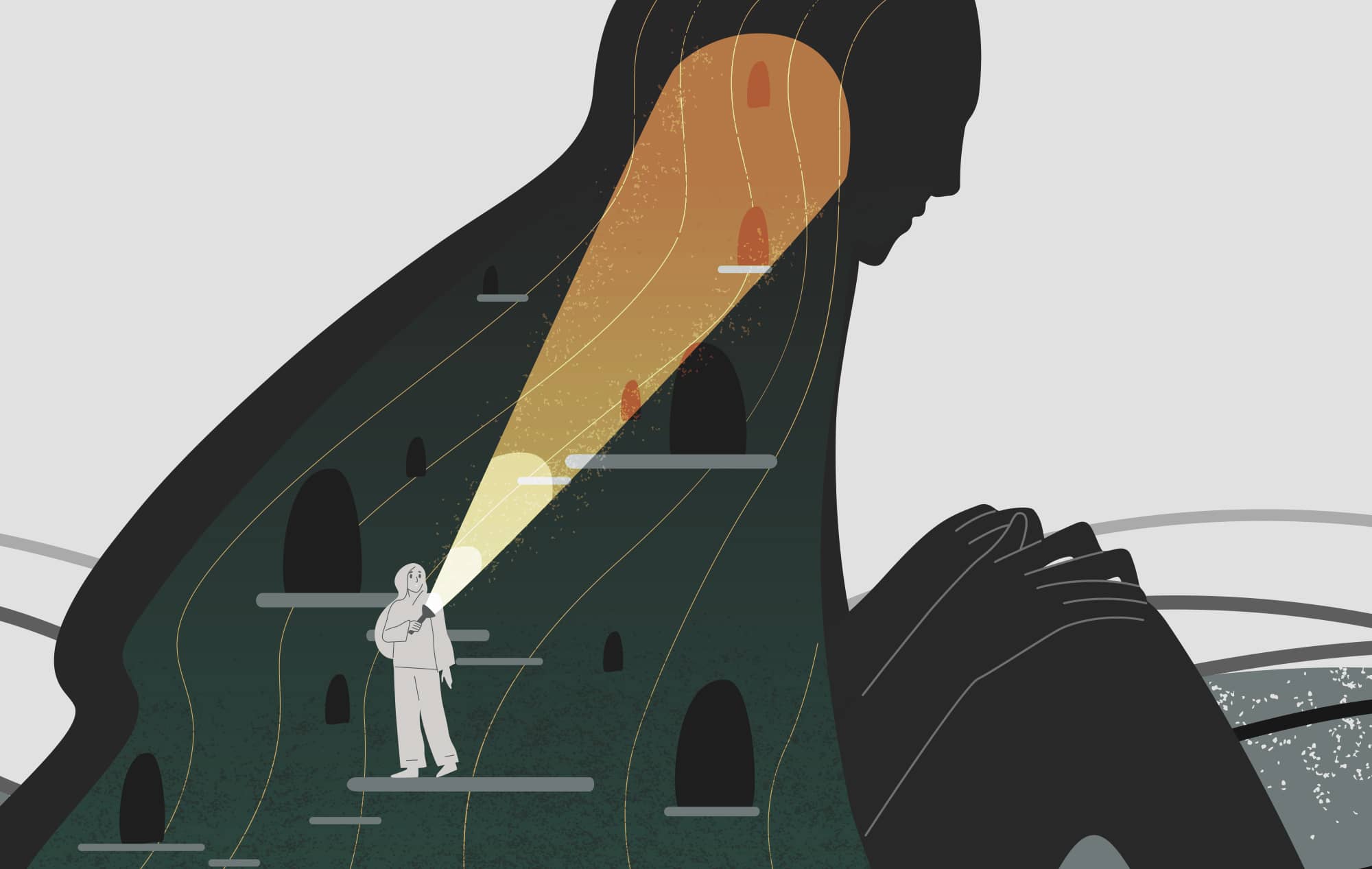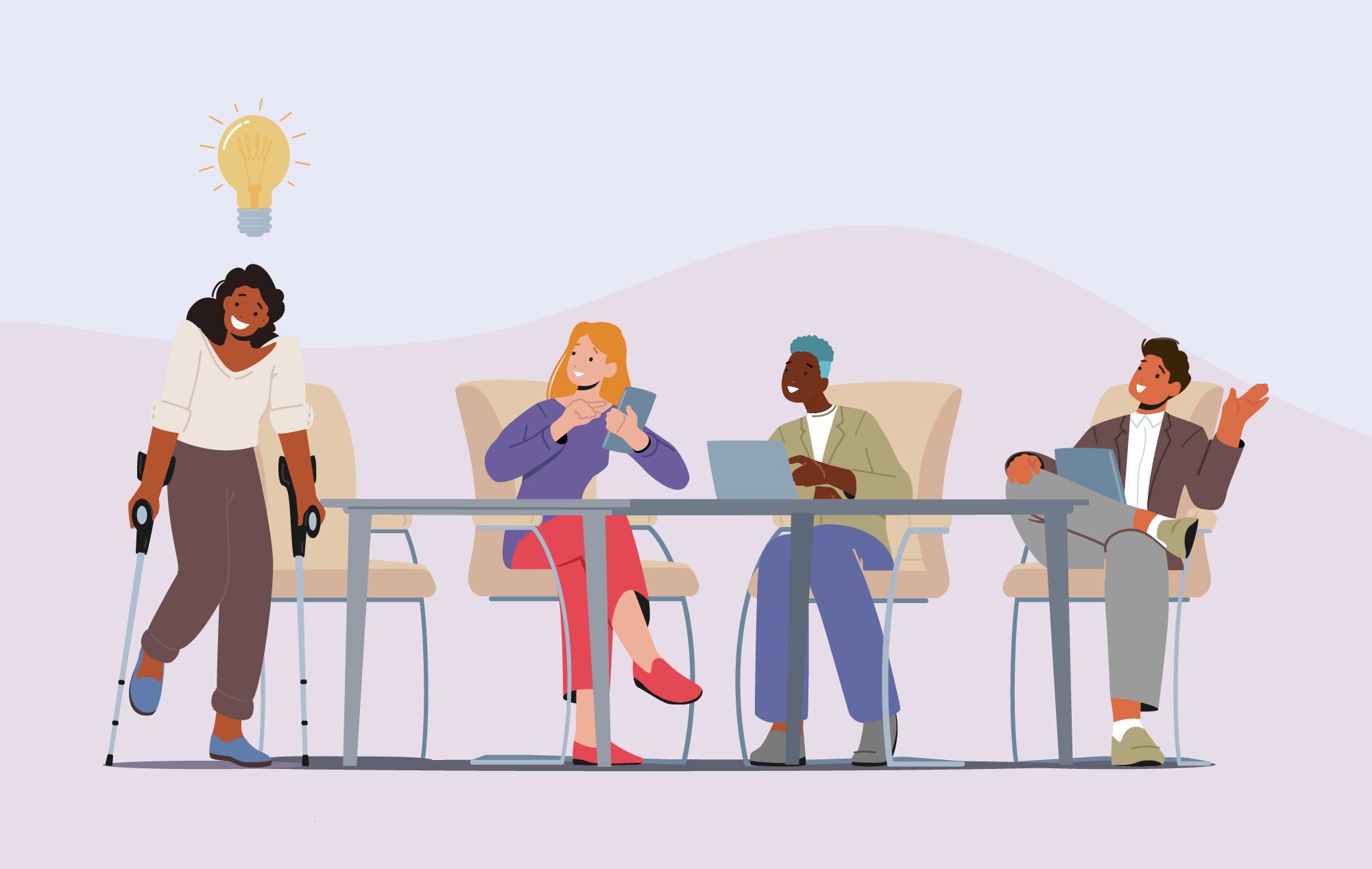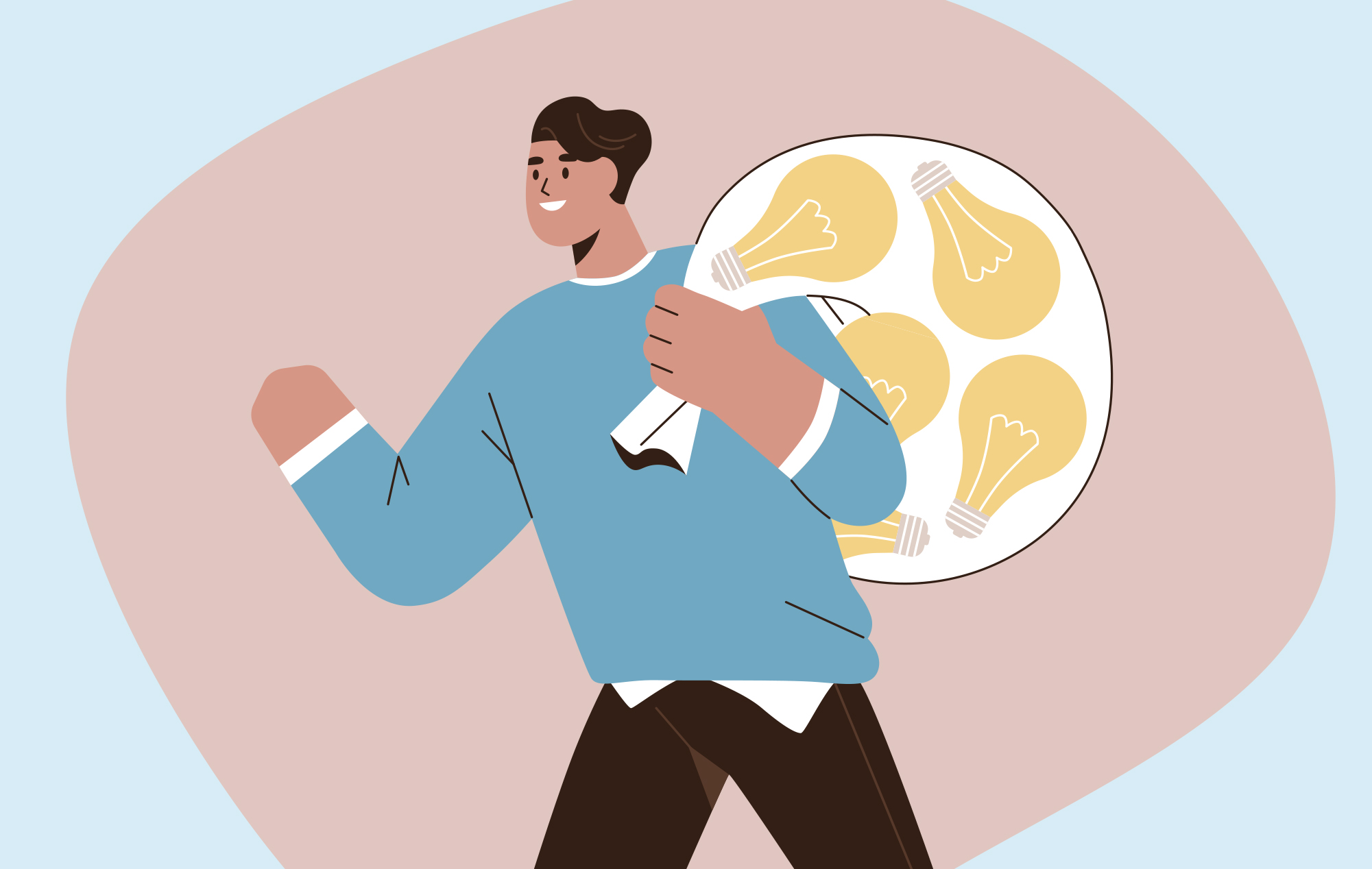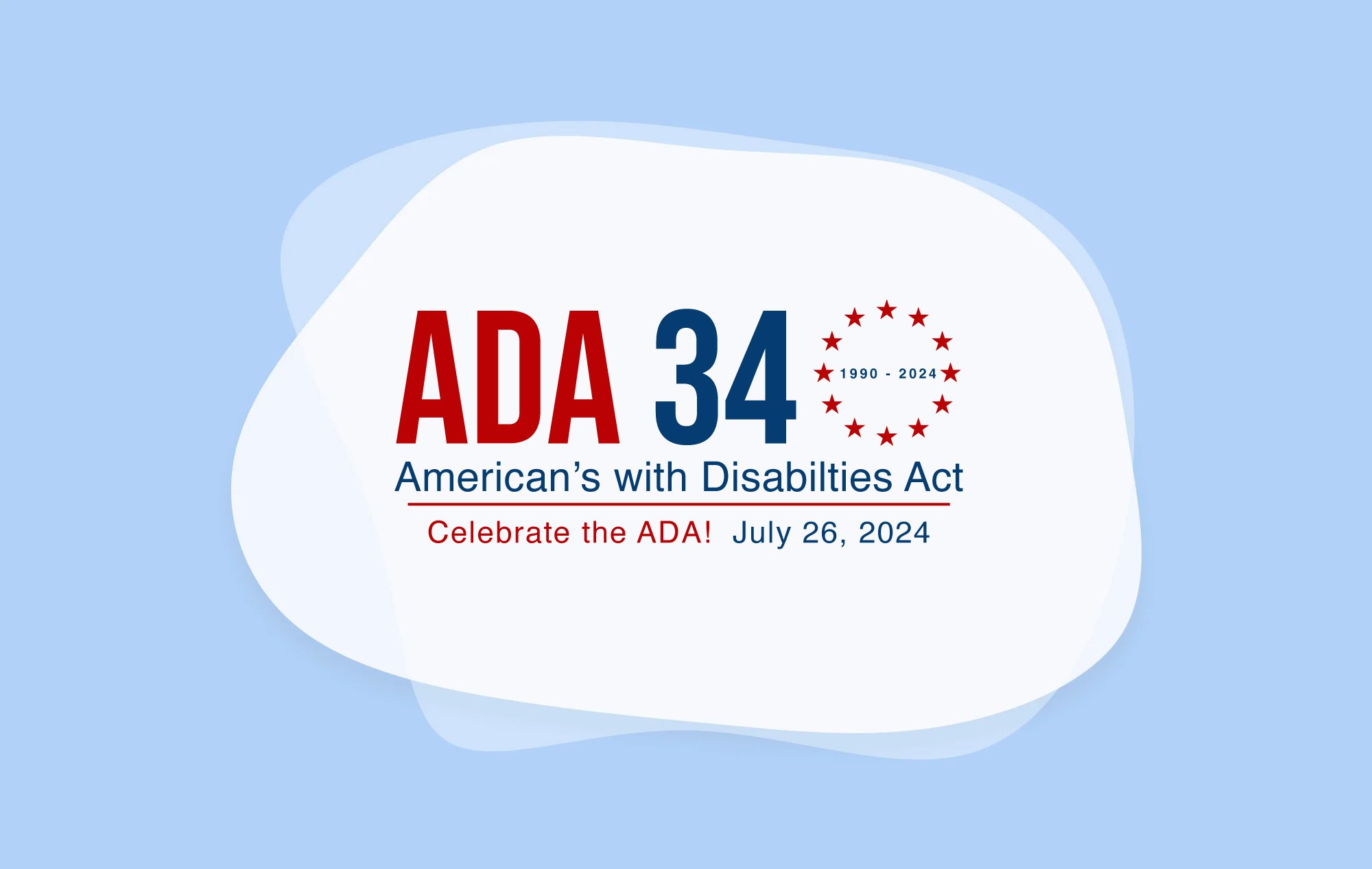As diversity, equity and inclusion (DEI) adoption becomes more widespread, it’s important to note that all disabilities deserve recognition, including the many "hidden" or "invisible" disabilities that go unnoticed. These include diagnoses such as anxiety, depression, bipolar disorder, post-traumatic stress disorder (PTSD), among others, as well as cognitive impairments including learning disabilities, and speech and language disorders.
According to the National Institute of Mental Health (NIMH), approximately one in five U.S. adults live with a mental illness—that’s 51.5 million people experiencing a wide range of diagnoses classified as mild, moderate, or severe.
The NIMH divides mental illness severity via two categories: Any Mental Illness (AMI) and Serious Mental Illness (SMI). While both can affect daily functions, such as school, work, relationships, and other activities, AMI includes those with "a mental, behavioral, or emotional disorder," while those with SMI live with "serious functional impairment, which substantially interferes with or limits one or more major life activities."
Factoring in the novel coronavirus pandemic and other external and environmental stressors, experts believe those suffering from mental illness are more prevalent than ever.
According to a survey administered by the American Psychological Association (AMA), mental health professionals have reported an influx of patients with anxiety and depression since the pandemic’s onset.
"In this sort of day and age, and especially since we’re still in a pandemic, I think it’s become clear that mental health disabilities are everywhere," Dr. Elizabeth Nikol, manager of Integrated Behavioral Health in Primary Care and Oncology at Summit Health, a New Jersey-based physician-led, patient-centric network committed to simplifying the complexities of health care and bringing a more connected kind of care, tells InclusionHub.
"I feel like anyone who had a mental health disability prior to the pandemic is now suffering more. In fact, whatever problems they might have had probably worsened in some way."
This exacerbates the already alarming statistics regarding mental health. According to the Centers for Disease Control (CDC), more than 50 percent of Americans will be diagnosed with a mental health disability at some point in their lives. Of this group, one in 25 live with serious conditions, such as schizophrenia, bipolar disorder, or depression.
When establishing inclusion and accessibility for those with mental health disabilities, it’s best to first understand this community’s needs and associated stigmas.
Consult this useful explainer for more information on the mental health community, such as its size and scope, stigmas, specific conditions, support groups, helpful resources, and more.
Mental Health Community Size & Scope
The National Alliance on Mental Illness (NAMI) classifies a mental health disability as a "medical condition that disrupts a person's thinking, feeling, mood, ability to relate to others, and daily functioning," underscoring the need for websites and content developers to consider those with mental health disabilities when creating digital platforms.
While there’s no specific cause of mental illness, the CDC suggests specific environments, experiences, and genetics are all contributing risk factors.
The most common factors contributing to a mental health disability diagnosis include:
- Childhood Traumas or Other Stressful Experiences: Abuse, Assault, or Other Violent Encounters
- Physical Health: Cancer, Diabetes, or Other Chronic Conditions
- Genetics or Chemical Imbalances
- Self Isolation & Loneliness
- Substance Abuse
Many of these can be amplified by environmental traumas, such as the coronavirus, the recent 20th anniversary of the Sept. 11, 2001 terrorist attacks, and other triggers.
"Having come through these last 18 months, there are many who might be struggling for the first time in their lives for so many different reasons," Nikol says. "People were taken away from their families and friends, and were now stuck at home. If someone was having marital issues, now they had to navigate living with their spouse in the same space, and that could have caused difficulties."
While some might have embraced isolation due to social anxiety and other phobias, she notes that getting back to a routine could be challenging, even crippling for some.
"As people are trying to get back to work or school, we’re seeing a lot more anxiety because it’s almost like people have ‘forgotten’ to interact, and their skill set is somewhat ‘off’," Nikol says.
"And because mental health is considered an ‘invisible disability,’ you can’t tell if someone is struggling with anxiety or depression, or is feeling overwhelmed.
"Someone might appear to be completely fine on the surface, but when they’re suffering for weeks and months on end, it’s basically a silent killer," she continues. "We hear stories of people unfortunately [dying by] suicide as a result, and then everyone looking at each other and wondering: ‘How did this happen’?"
Despite the American Psychiatric Association (APA) reporting most mental health illness symptoms surfacing by age 14—and three-quarters by age 24—most are often undiagnosed.
While symptoms never appear without warning, there are still signs to know. According to the APA, those exhibiting even just one or two of these symptoms should seek guidance from a trained mental health professional:
- Changes in Sleep or Appetite
- Extreme Mood Swings
- Withdrawal & Apathy
- Difficulty Performing Daily Tasks
- Low Concentration
- Overstimulation & Heightened Sensitivities
- Vague Sense of Reality
- Irrational Thinking
- Increased Anxiety & Suspicions
- Unrealistic Expectations
- Any Unusual Behaviors
While understanding the warning signs and symptoms is the first step toward inclusivity, it’s also about building awareness and education on how and where to get help.
"We need as much mental health care and accessibility as we can possibly get for people," Nikol says. "We haven’t even begun to scratch the surface of what the long-term mental health issues are going to be, especially because of what everyone has been through."
Types of Mental Health Disabilities
Here a few of the most common mental health disabilities:
Anxiety
Those with this disability have daily, recurring thoughts and justify avoiding specific situations. Many experience physical symptoms, such as sweating, trembling, dizziness, headaches, and a racing heartbeat.
Bipolar Disorder
Sometimes diagnosed in early childhood, this disorder severely alters mood, energy and functioning, combined with manic and depressive episodes.
Borderline Personality Disorder (BPD)
Known as an emotional dysregulation disorder, BPD severely disrupts daily activities, such as family, work, and other important areas.
Depression
This persistent condition interferes with several functions, such as thoughts, behavior, mood, relationships, and physical activity.
Eating Disorders
Often dismissed as a lifestyle choice, eating disorders such as anorexia nervosa, bulimia nervosa, and binge-eating disorder, are classified as mental illnesses. Other symptoms include obsession with body weight and shape, calorie intake, and food.
Obsessive-Compulsive Disorder (OCD)
Interfering with daily activities, common OCD themes include obsession with organization, fear of germs and illness, and loss of control.
Phobias
Classified as an anxiety disorder, phobias include an unrealistic or irrational fear. According to the NIMH, more than 30 percent of U.S. adults will confront this mental illness throughout their lifetime.
Panic Disorder
Usually diagnosed once the individual experiences less than four episodes, it also includes regular concerns of having another panic attack.
PTSD
Those suffering from PTSD avoid individuals, or other activities related to a traumatic or life-altering event. Symptoms can appear within three months of the related experience, or as long as months or years after the event.
Schizophrenia
This mental disability affects clear thinking and the difference between real-life and fiction. It also interferes with decision-making, relationships, and emotions.
Seasonal Affective Disorder (SAD)
Usually arising within fall and winter months, SAD patients experience regular or increased moods during the remainder of the year. It is often experienced by those with severe depression or bipolar disorder.
Mental Health Stigmas & Stereotypes
Removing the stigma and stereotypes around mental health disabilities is another step toward greater inclusivity. With society often labeling these individuals as dangerous, less educated, or unstable, it’s not surprising many refrain from seeking appropriate diagnoses and required care. According to the Mental Health America 2020 Access to Care Data ranking, 57.2 percent of adults have untreated mental health disabilities.
Delaying or simply ignoring these feelings and symptoms are a result of stigma, prejudice, and discrimination. Those suffering from mental health disabilities also fear being treated differently by loved ones, friends, and co-workers.
According to Alyson Ryan, a licensed clinical social worker (LCSW) and founder of Suffolk Counseling Services, a Sayville, N.Y.-based mental health counseling center, mental health care and treatment begins with education and having difficult—yet important—conversations.
"Creating more awareness about mental illness is really helping to destigmatize this so people don’t feel like they’re dealing with it alone," Ryan tells InclusionHub.
"And the more you know, the more you’re out there. When you see people discussing things and sharing how they’re feeling and talking about going to therapy, it can bring relief to someone who really feels as though there’s something ‘wrong’ with them, but doesn’t know how to define it, or describe it.
"For me, as someone who comes from a generation where you don’t air your [so-called] ‘dirty laundry,’ it’s ok to cry, and talk it out...we have to be happy," Ryan continues.
Ryan agrees with Nikol of Summit Health that external sources can exacerbate conditions such as depression, anxiety, and PTSD. She says one of the first steps she takes is to designate the difference between these situational struggles, compared with a patient who might have a genetic disorder or chemical imbalance.
"It’s important to make the connection between real physiological change and your brain chemistry, and even the wiring and the different neural pathways your brain receives and processes images," Ryan shares. "So usually, there’s a combination of both: We can all be triggered or impacted by things in our community. But there’s also this other piece, and we can talk about the process to get people to know more about what’s happening to them physically [as a result of their mental health disability] and provide an understanding, then maybe they’d be open to more available treatment options."
Conditions such as anxiety, depression and PTSD often coincide with life-altering events. Both Ryan and Nikol agree the concurrent events of the September 11 anniversary and the coronavirus have amplified these conditions.
"When we have collective experiences, our reserves are drained," Ryan says. "You have the 9/11 memorial, and then our tanks are already empty because we’re in a pandemic, and we’re worried about this, and our reserves aren’t there, so we’re already at a disadvantage, because everyone is already taxed."
Comorbidities Between Substance Abuse & Mental Illnesses
Stress, fear of the unknown, and constant reminders of coronavirus-related deaths and other uncertainties have led to an increase in anxiety and depression. This ranges from those who might have been in recovery, or on the cusp of developing an addiction. People with substance abuse disorders are also potentially more likely to contract coronavirus and experience serious symptoms, such as hospitalization, and even death.
According to a June 2020 CDC report, 13 percent of Americans reported that they began or increased abusing substances as a coronavirus coping mechanism. This also led to overdose spikes, which increased 18 percent compared with the same time in 2019. Concurrently, a December 2020 AMA report notes more than 40 U.S. states have experienced increased opioid-related deaths.
The rise in these numbers can also be attributed to those suffering with mental health disabilities concurrently with substance abuse. According to a 2019 survey from the Substance Abuse and Mental Health Services Administration, 9.5 million U.S. adults who suffer from mental health also abuse drugs, alcohol, or both.
Known as dual diagnosis or co-occurring disorders, either can appear first. Because symptoms can be diverse, NAMI says mental health facilities are also utilizing drug and alcohol screening tools to identify dual diagnosis.
According to NAMI, symptoms include:
- Loss of Interest in Daily Activities
- Isolation From Loved Ones
- Drastic & Manic Behavioral Changes
- Risky & Impulsive Choices
- High Tolerance & Inability to Function Without Drugs and/or Alcohol
- Feeling Ill & Withdrawn
As one of the co-founders of Long Island, NY-based The Great South Bay Coalition, a mission-based organization promoting mental and physical health initiatives to reduce youth substance abuse, Dorothy Johnson knows better than most the profound impact a dual diagnosis can have on people with disabilities and their families. More than 10 years ago, Johnson’s 28-year-old son, Max, passed away from a heroin overdose. While she and her son openly spoke about his addiction, it still wasn’t enough to help with his crippling emotional pain.
"It was the depression," Johnson tells InclusionHub. "He had been in a very bad car accident, and then his father passed away, so there were a lot of mental health issues. One night he went out, and when he came home, he said: ‘Mom, I was at a party, and I let a girl stick a needle in my arm.’ At first, I thought he was joking, but then he fell to his knees, cried, and said: ‘How could I have let this happen to me?’"
Johnson says her son tried support groups, rehabs, therapy, and other resources, but he couldn't curb his addiction—even though he wanted to stop.
"He had gone through so many programs, and he would cry to me and say: ‘Mom, please help me!’ But nothing would work for him," Johnson continues. "So you just don’t know. I knew he had it in his heart [to stop] but I couldn’t see what was in his mind. The addiction factor is something we still don’t know enough about."
Johnson adds The Great South Bay Coalition was designed to remove the stigma surrounding those suffering from addictions to get help and be willing to discuss it.
"We need to have tough conversations," Johnson says. "If you say you’re seeing a psychiatrist, then people might think you’re ‘crazy,’ and they don’t want people talking about them. Everyone isn’t happy all the time. We’re human beings, and some people might just have a day where they don’t feel well, and then it goes away. But others hide it and cope with drugs and alcohol, and then something major happens, and they fall into a deep depression."
Mental Health Groups & Resources
The following is a list of nonprofit resource and mental health advocacy groups. This also includes support groups for those who have lost a loved one from the effects of mental illness, addiction, or both.
Resources
- American Foundation for Suicide Prevention
- American Psychiatric Association Foundation
- American Psychological Association
- Candle Inc.
- FindTreatment.gov
- Mental Health America
- National Alliance on Mental Illness
- National Suicide Prevention Lifeline
- Sober Living America
- The Trevor Project
- Treatment Advocacy Center
Support Groups
- Al-Anon/Alateen
- Alcoholics Anonymous
- Alliance of Hope for Suicide Loss Survivors
- Anxiety and Depression Association of America
- The Compassionate Friends
- Depression and Bipolar Support Alliance
- Dual Recovery Anonymous
- Gift From Within
- International Obsessive Compulsive Disorder Foundation
- Mental Health America
- Narcotics Anonymous
- National Eating Disorders Association
Cultivating an Inclusive & Accessible Environment for the Mental Health Community
With stigma and shame often surrounding the mental health community, It’s more important than ever for organizations to facilitate inclusive and accessible environments. Removing these barriers is the first step in reducing the fear of living with an undiagnosed mental illness.
"Organizations need to be thinking about employee mental health and wellness, letting them know that they care about them and don’t see mental health disabilities as something they should have to hide."
"They need to convey that help is available, and they shouldn’t suffer in shame through silence," says Nikol of Summit Health.
"We need to allow for self-care," says Ryan of Suffolk Counseling Services. "I really like policies where employees can use their time off in any way they need. It’s okay to take a sick day, and one one will make you feel like a ‘bad’ person if you do. Knowing when to set good boundaries for yourself is going to allow you to perform better [at your job] later on. So we need to change the culture of where self-care falls, and how to make it more easily accessible."
Read our comprehensive guide "How to Improve Web Accessibility & Digital Inclusion for Those With Mental Health Disabilities" to learn more about providing an accessible and inclusive experience for the mental health community.






Leave a Comment